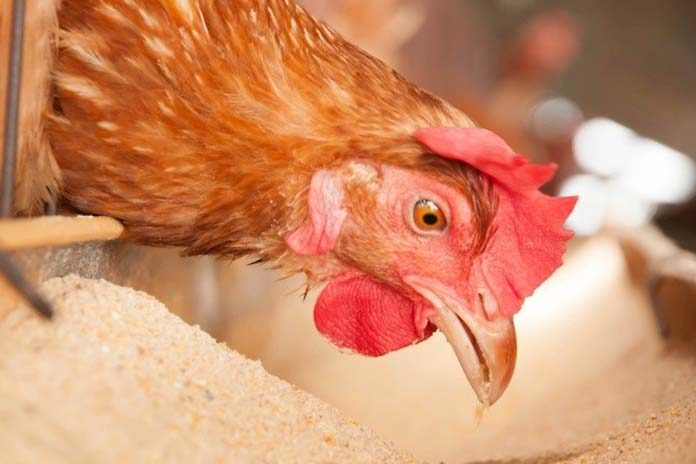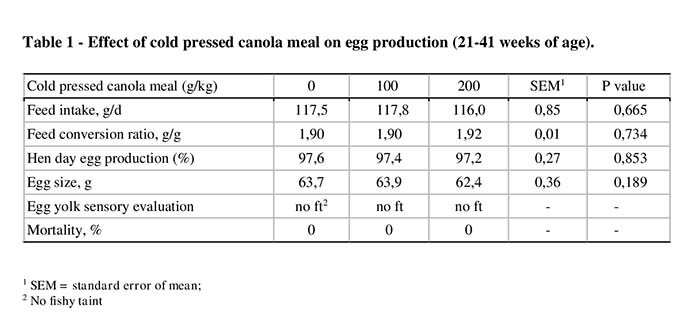
Canola meal has been available for the layer feed industry in Australia for over 30 years. However, very little has been used due to the concerns of “fishy taint” in eggs.
This problem has now been solved by work of the layer breeders, selecting against the gene responsible for the problem. Therefore we now need to know how much canola meal can be used in layer diets, while maintaining high levels of performance. Also we now have a relatively new type of canola meal, called cold pressed canola meal (CPCM).
This meal was not previously available in large quantities. This meal is subjected to low processing temperatures, maximum 60 °C, compared with over 140 °C for both expeller and solvent meal. This lower temperature means less damage to the protein, as shown in consistently higher reactive lysine assays for this meal. The CPCM contains 110 g/kg oil, a high ME level of 11.1 MJ/kg, and total lysine of 20 g/kg. The current trial was conducted to test the inclusion of cold pressed canola meal at 100 and 200 kg/MT in layer diets.

Ninety Nine (99) Hy-Line Brown pullets aged 21 weeks at the start and housed in single cages were used in the trial. Diets containing 0, 100 and 200 g/kg CPCM (from Cootamundra Oilseeds Ltd) were fed. Diets were wheat, soybean meal, cold pressed canola meal, 11.72 MJ/kg ME, 155 g/kg protein, 7.6 g/kg digestible lysine, 38 g/kg calcium and 3.0 g/kg available phosphorus. Pullets were at 50 % egg production at the start and the trial lasted for 20 weeks. Measurement of egg production parameters and egg quality were made, data was analysed with SPSS version 22. Some results are shown in Table 1. Including CPCM at 100 and 200 g/kg had no effects on egg production parameters and maintained the extremely high levels of production of the control diet. Sensory evaluation on samples of eggs (n=99) from the 3 treatments did not reveal the presence of “fishy taint” in any treatment. Measurement of external and internal egg quality showed no differences (P>0.5) in transparency score, shell reflectivity, breaking strength, deformation, shell weight, shell %, shell thickness, albumen height, haugh units and yolk colour score.
CPCM may be successfully used at levels of at least 200 g/kg in layer diets. The problem of “fishy taint”, which previously prevented use of canola meal at high levels, was not apparent in CPCM fed to Hy-Line brown layers at 100 and 200 g/kg.
This research was conducted within the Poultry CRC, established and supported under the Australian Government’s Cooperative Research Centres Program.
Source: Australian Poultry Science Symposium
















